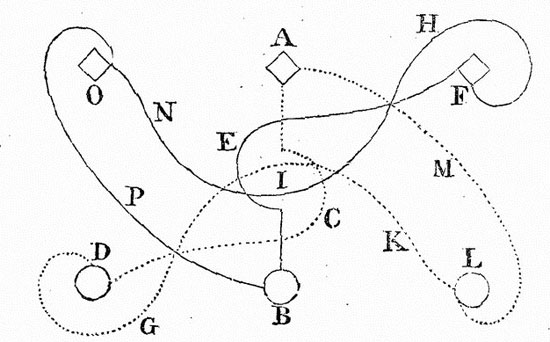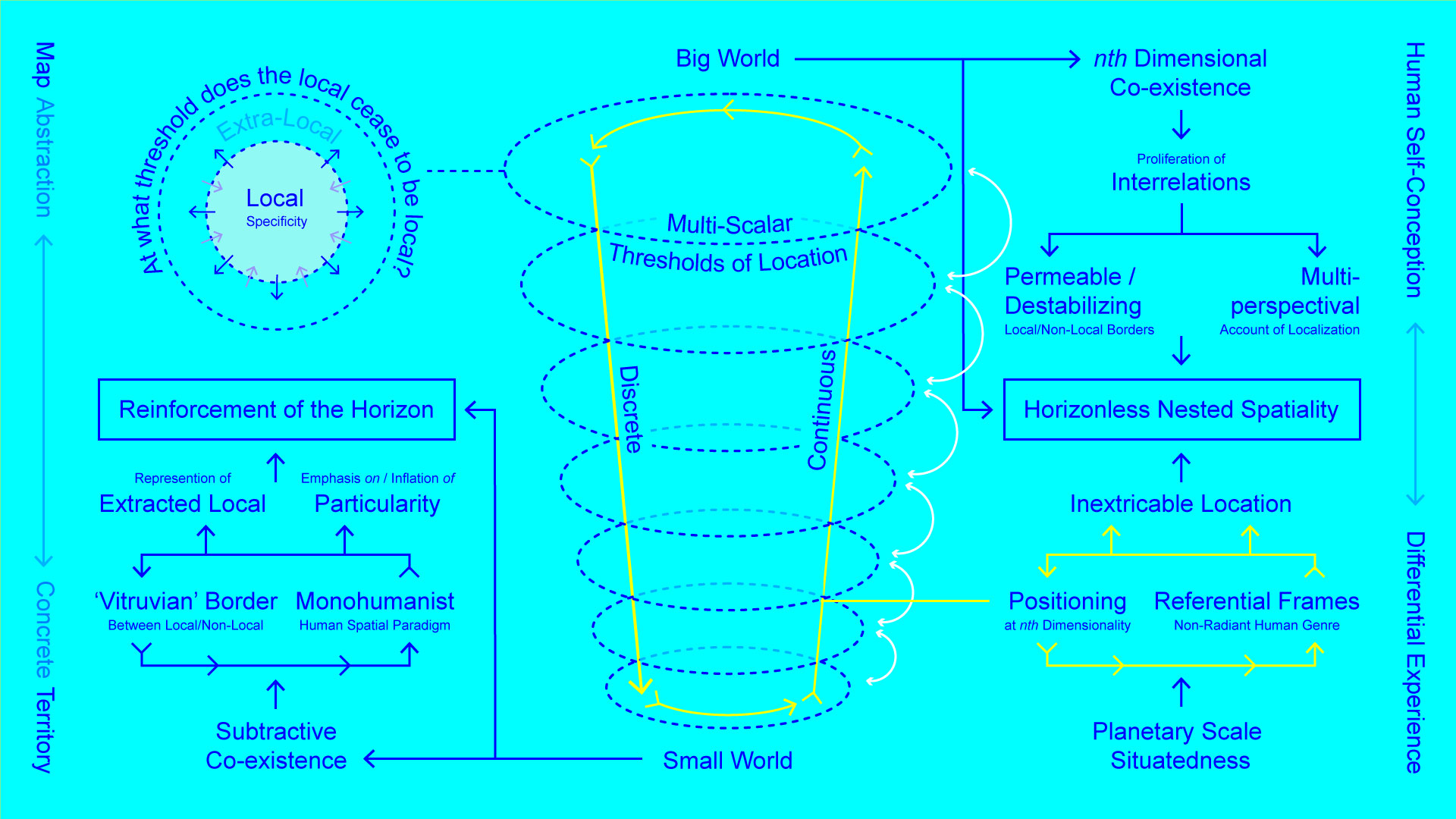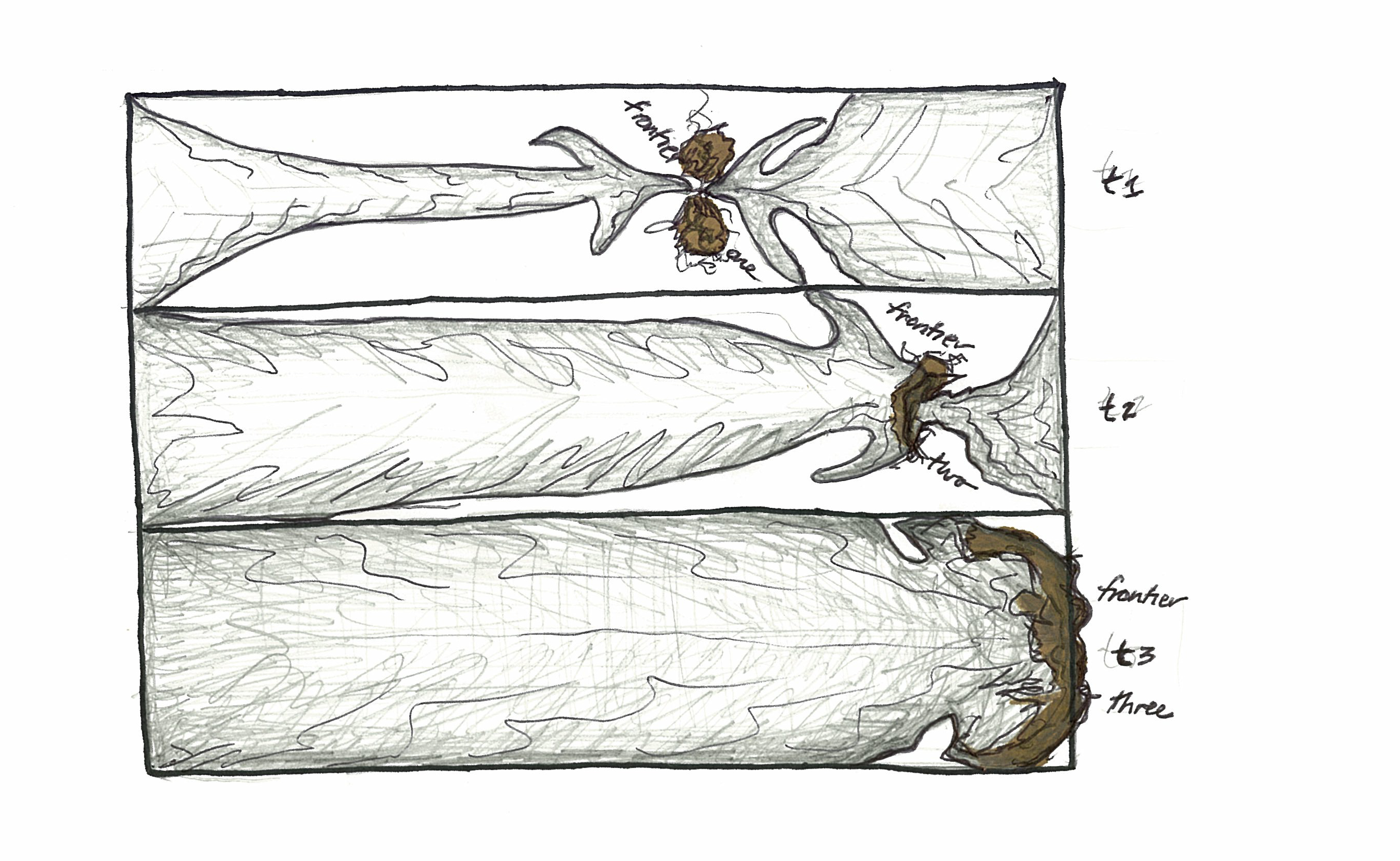The Serpentine Dance hinted at an exoticism, but was often read as sublimation in the chemical sense: a phase transition between a solid body and a gaseous apparition, without quite passing through a liquid state. If the Serpentine Dance emerged in the turbulence of transatlantic crossings and the ports of empire, its characterization as a rapid circuit from a fixed body to air would treat liquescence as an inclination or step toward the figural, a referential tendency toward the affirmation of ideal forms rather than delight in afformation.
Movement


Whether it is the coerced restriction of the free spatial movement of citizens, the shifting movement of individual and collective priorities, the rise of the number of infections and deaths or the fall of national economies, the notion of movement becomes urgent at the point of pandemic stasis. Is the digital hyperproduction we are witnessing a symptom of the psychotic restlessness under the sudden condition of captivity or rather the natural predisposition of the social body to keep moving? Perhaps stillness is the new movement, and the global halt an opportunity to contemplate the next move.
The following selection of e-flux journal texts revolves around the act of moving.
Are these dispatched workers not the new colonized slaves of bourgeois democracy and its internal colonialism? When empires that disseminate neoliberalism also try to guide people around the world in how to take action, while intentionally blurring the tremendous class disparity that separates citizen from citizen, is this not a “New Losheng Sanatorium,” one that uses labor flexibilization to implement an alternative form of exclusion under the guise of “freedom” and “democracy”? Now, however, the isolated and excluded are no longer just leprosy patients; they are everyday people forced to live in a neoliberal society.
There are those who champion, or who actively seek to amplify, the navigational turbulence produced by this decentered human position at the planetary scale, making for an urgent battle over claims on orientation. Such tendencies thrive among several techno-neoreactionaries, who, in denying absolutely any form of planetary navigability from a resituated human position, ultimately advocate for the stripping of humanity’s cognitive-political agencies to transform given frames of reference. Paradoxically, what is often perceived as a form of techno-fetishist futurism is nothing but an unimaginative conservatism that celebrates the preservation of existing frames of reference. These existing frames are defended as if they are an immutable fact of nature, a world “naturally” oriented by nineteenth-century navigational frameworks, now augmented by twenty-first-century AI, smart cities, and iPhones. Implicit endorsements for dehumanization can be found in this destructive negation of these capacities. At this juncture, it becomes evident that the struggle for orientation at nth-dimensionality coexistence demands intervention on this artificial plane, in order to dislodge naturalized conservatisms that are often disguised as blinking futurity.
My taxonomy of images of alterity from the twentieth century—ethnographic, militant, and witness—is not opposed but rather transversal to Rancière’s. What I am interested in, firstly, is tracking the kinds of discourses underlying images of Western alterity in the aftermath of the postcolonial critique of the ethnographic image, the demise of the third-worldist militant image, and the exposure of the limitations of the witness image, which often serves to perpetuate the figure of the “victim.” These visibilities have perhaps become the “visual” in Daney’s sense. Second, I wish to consider the possibility of an image of soulèvement—in the sense of an image of an other that could threaten Western imperialism and capitalist absolutism, a system this is consensually driven by the desire and need for visibility, and that legitimates social Darwinism with racism and misogynist speech in the public sphere.
It’s one of the reasons I’m not generally interested in making films about white folks. I’m really interested in making work that is always foregrounding black people’s humanity, bad guys or good guys. I like the alien. I’m a big fan of the alien. I’m a big fan of Hannibal Lecter, who I think is black and passing. Fundamentally, I just want to see black people who are complex. And competent at what they do, even if they’re mad geniuses or whatever.
Two imaginaries of space have played a crucial role in the emergence of liberalism and its diasporic imperial and colonial forms, and have grounded its disavowal of its own ongoing violence. On the one hand is the horizon and on the other is the frontier. These two spatial imaginaries have provided the conditions in which liberalism—in both its emergent form and its contemporary late form—has dodged accusations that its truth is best understood from a long history and ongoing set of violent extractions, abandonments, and erasures of other forms of existence, and have enabled liberalism to deny what it must eventually accept as its own violence.








